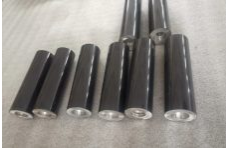

current position:Information and data>Thermal spray anti-corrosion coating
Speaking of corrosion, the first thing that comes to our mind is rust on steel, which is a chemical process in which elemental iron is oxidized to form compounds. Corrosion brings a lot of material loss and hidden danger to production safety in industrial production. Generally, surface treatment is used to prevent corrosion, such as electroplating technology, hot-dip galvanizing process and traditional thermal processing methods such as baking blue. In addition, our thermal spraying technology is also an important means of anti-corrosion.
Thermally sprayed arc metal wire and thermally sprayed oxyacetylene flame pure metal powder to prepare a metal coating that can protect the substrate body through self-sacrifice (usually active metals such as aluminum and zinc are used to form the negative electrode of the primary battery, that is, Continuous loss of electrons is oxidized, and then an oxide film is formed to protect the substrate that forms the positive electrode of the primary battery. This method is suitable for marine anti-corrosion, not suitable for high-resistance soil environments), and is a common method for atmospheric or marine anti-corrosion. For example, many component railway bridges across the Yangtze River basically use thermal spraying technology for anti-corrosion.
When encountering stronger inorganic acid corrosion, thermal spraying technology can have its own solution. We recommend nickel-chromium alloy and chromium oxide coating, because nickel and chromium have been passivated in acid solution to form oxide film, and chromium oxide coating itself is insoluble in acid and alkali, but as a coating, porosity It is an inevitable problem. If the substrate is not corroded by the solution, it is necessary to seal the pores: in normal temperature conditions, use an organic sealing agent, and an acid solution above 400 degrees Celsius, and use a non-polar sealing agent containing ceramic aggregates. Some factories use the process of phosphating the coating before sealing, and carry out double insurance treatment.
As an alloy coating, the deposition efficiency during spraying is definitely higher than that of a ceramic coating, but the purchase cost of the former powder is higher than that of the ceramic powder, so which powder is selected to prepare the acid corrosion-resistant coating, it needs to be calculated in detail and analysis.
In addition, as a surface layer, nickel-chromium alloy also needs to be primed. It is recommended to use self-fluxing nickel-clad aluminum powder to prepare the primer powder, and use the intermetallic compounds generated during exothermic heat to increase the micro-metallurgical bond between the coatings.
However, compared with the corrosion of sulfuric acid and nitric acid solution, the corrosion rate of nickel-chromium alloy coating in hydrochloric acid solution is higher than that in the former two (the coating does not fall off immediately, but the service life is longer than that in sulfuric acid and nitric acid solution. It is shortened by half in nitric acid solution), which is related to the reaction between nickel-chromium alloy and hydrochloric acid.
The article on this page is original, please inform us if you reprint it. If there is plagiarism, its shameful behavior will be cracked down.

Hot information

